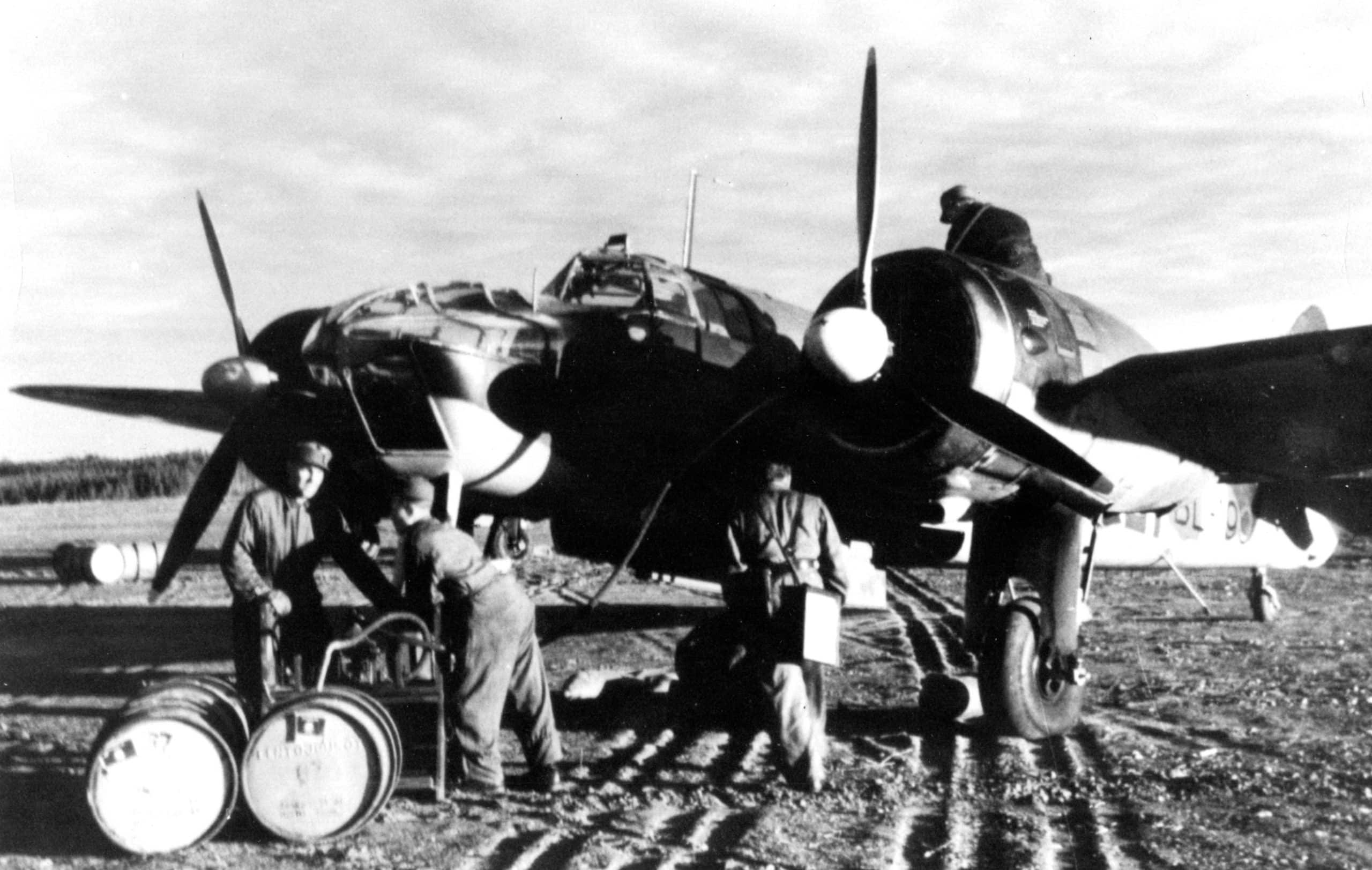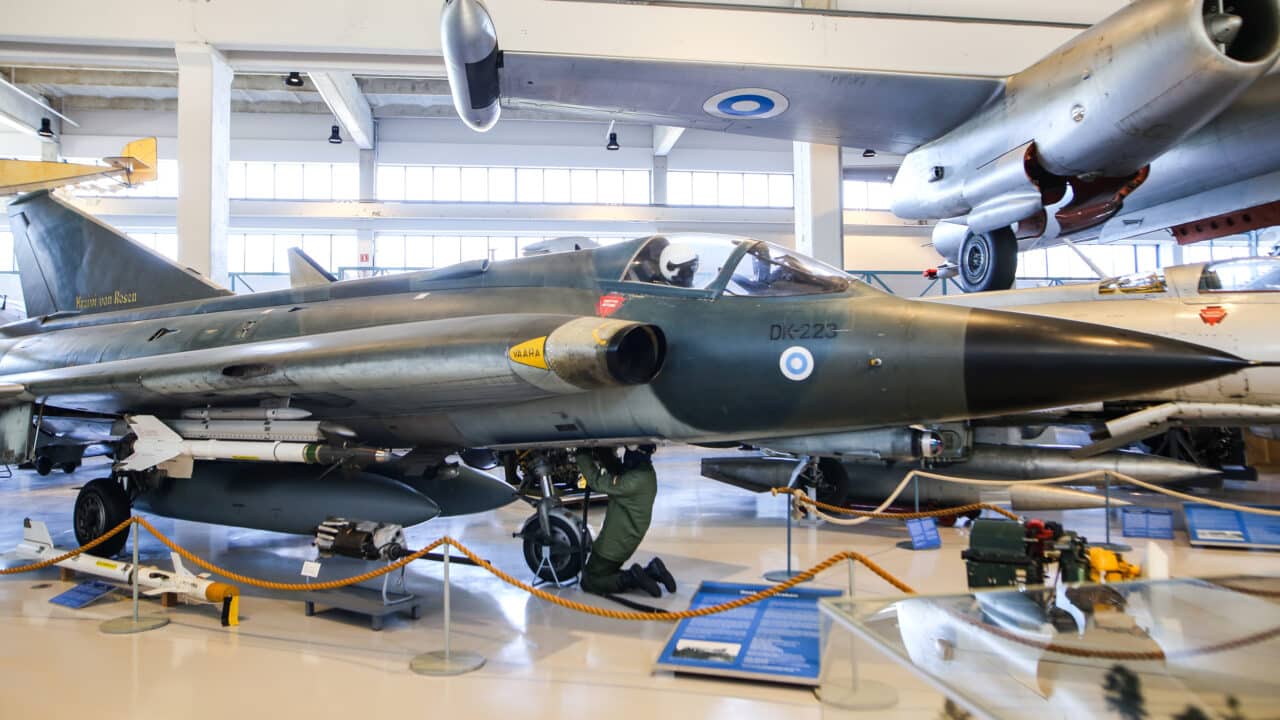The Blenheim is a British three-seat bomber of all-metal construction. Its first flight took place in June 1936. The new bomber was faster than most contemporary fighters, which naturally aroused much interest, and the Royal Air Force and the Finnish Air Force placed orders for the aircraft off the drawing board. In 1937, a new variant designated Mk IV was developed from the original Mk I. The crew compartment was enlarged by lengthening the nose by 86 cm and fuel tankage was increased for extended range. Over 5,300 Blenheims were built.
Finland was the Blenheim’s first export customer. The Ministry of Defense ordered the first batch of 18 Blenheim Mk Is in October 1936, and they were flown to Finland from July 1937 onwards. A manufacturing license was acquired in April 1938, and the first series of 15 Blenheims was ordered from the State Aircraft Factory in April 1939. 24 additional Mk IVs were purchased from Britain during the Winter War.
The Air Force operated 97 Blenheims, of which 22 were Mk IVs. The State Aircraft Factory built 55 Blenheims. The last flight of the type was in May 1958.
BL-200 was completed in March 1944. It was stored after the war until returned to service in August 1954. The last flight of the aircraft was in June 1957. It is the only surviving wartime bomber of the Air Force.
Link copied!
Additional info
Operating time
1937–1958
Manufacturer
Bristol Aeroplane Company, Great Britain.
Measurements
Wing span 17.17 m; Maximum speed 450 km/h; Length 12.98 m; Height 3.05 m.
Type
Bomber
Object number
322
Location
Main exhibition



